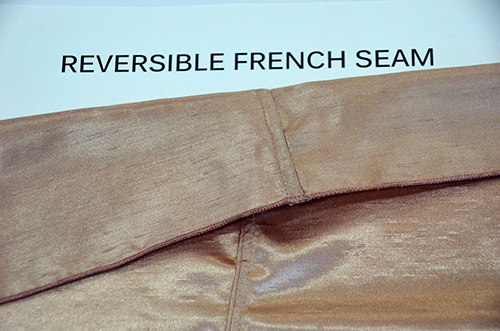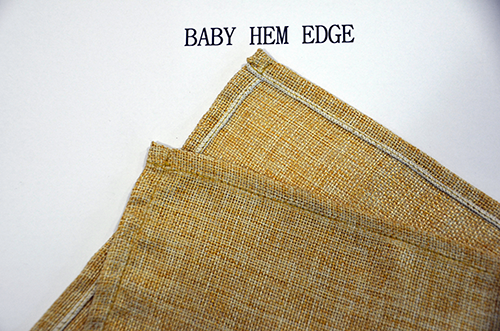How do we sew our Tablecloths, Napkins, Overlays, Chair Covers, Sashes and more?

What is a Merot Edge?
As seen in the Merot Edge – this is our standard method of sewing all Table Napkins and Edges of our Tablecloths, Overlays, Sashes and more. We do have an upgraded Baby Hem Edge on select items.

What is a Reversible French Seam?
Construction of a French Seam requires two panels of the fabrics and joining them together to make them reversible. It's requires a multiple step sewing process in which the fabrics are turned to have the right sides together, placing the seam allowance inside the seam and stitching on more time. By doing this, you are hiding the seam on the inside allowing the product to have a reversible seam.
For example, in our Shantung Satin line, you can choose to manufacture with a French Seam which then allows you to rent the product with a Dull or Shiny Face. One should choose this option only if time permits. Reversible French seams may delay the manufacturing process by 5 business days.

What is a Baby Hem Edge?
Construction of a Baby Hem Edge is a narrow rolled hem sewn with a single needle. The fabric is double turned with a small fold to reduce edge visibility and create a durable product. Hem Edge allows for Napkins and non-sturdy tablecloths like Burlap or Vintage Linen fabrics to last multiple washes.
For example, we highly suggest our clients to choose Hem Edge options for our Vintage Linen products – Since the Vintage linen is a Poly Burlap look – the loose weaves may open during multiple washes. When applying Napkins for example with Hem Edge, the fabric is quite sturdy and will not open or break during multiple washes.





